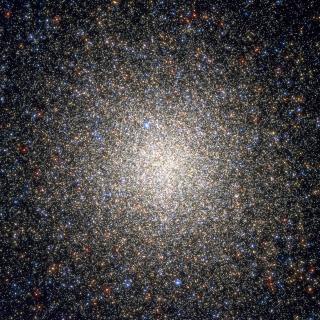Bibcode
Hoyer, S.; López-Morales, M.; Rojo, P.; Nascimbeni, V.; Hidalgo, S.; Astudillo-Defru, N.; Concha, F.; Contreras, Y.; Servajean, E.; Hinse, T. C.
Referencia bibliográfica
Monthly Notices of the Royal Astronomical Society, Volume 434, Issue 1, p.46-58
Fecha de publicación:
9
2013
Número de citas
31
Número de citas referidas
27
Descripción
We report 12 new transit observations of the exoplanet WASP-4b from the
Transit Monitoring in the South (TraMoS) project. These transits are
combined with all previously published transit data for this planet to
provide an improved radius measurement of Rp = 1.395 ±
0.022Rjup and improved transit ephemerides. In a new
homogeneous analysis in search for transit timing variations (TTVs) we
find no evidence of those with rms amplitudes larger than 20 s over a
4-yr time span. This lack of TTVs rules out the presence of additional
planets in the system with masses larger than about 2.5, 2.0 and 1.0
M⊕ around the 1:2, 5:3 and 2:1 orbital resonances. Our
search for the variation of other parameters, such as orbital
inclination and transit depth, also yields negative results over the
total time span of the transit observations. Finally, we perform a
simple study of stellar spots configurations of the system and conclude
that the star rotational period is about 34 d.
Proyectos relacionados

Vía Láctea y galaxias cercanas
El objetivo general del Proyecto es el estudio de la estructura, historia evolutiva y proceso de formación de galaxias a través de sus poblaciones estelares resueltas, tanto a partir de fotometría como espectroscopia. El proyecto puede dividirse en cuatro líneas principales: I. Historia de formación estelar en el Grupo Local. El objetivo de esta
Martín
López Corredoira

Exoplanetas y Astrobiología
La búsqueda de vida en el Universo se ha visto impulsada por los recientes descubrimientos de planetas alrededor de otras estrellas (los llamados exoplanetas), convirtiéndose en uno de los campos más activos dentro de la Astrofísica moderna. En los últimos años los descubrimientos cada vez más numerosos de nuevos exoplanetas y los últimos avances
Enric
Pallé Bago